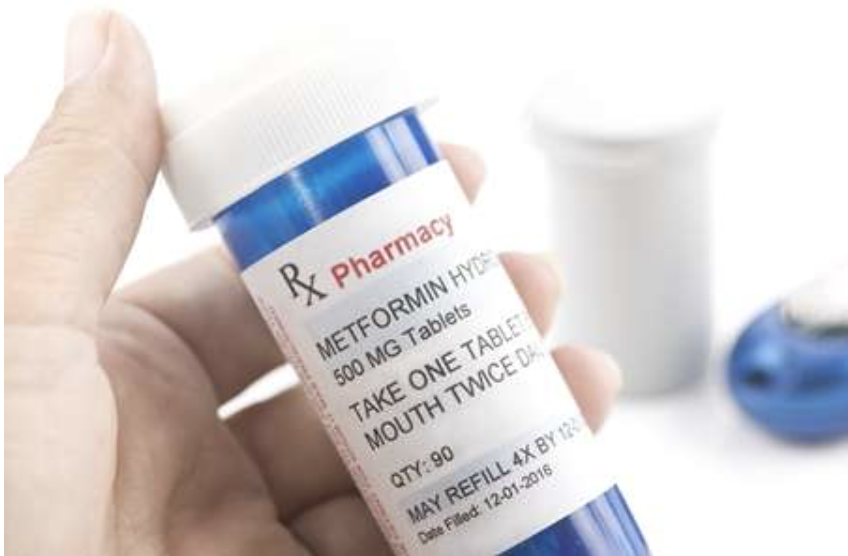
Opioids after surgery: Getting the numbers right
There is an opioid crisis in America and our patients are aware of it. Did you know that 530 individuals die each week due to opioid overdose.1 The media has effectively publicized this growing problem, and patients are aware of the role that legally prescribed opioid medications can play in dependence and addiction. Congress and state governments are also paying attention.
In February 2018, Congress promised $6 billion over two years for initiatives to fight opioid abuse, and many state legislatures have proposed limitations to the number of opioid pills physicians can legally provide to their patients. Right or wrong, physicians must be aware of these new laws and be willing to change their prescribing practices in order to comply. However, instead of waiting for legislation to shape our practices, we can and we should look to new guidelines to help patients avoid developing dependence on prescription opioids in the first place.

Surgeon prescribing practices for post-surgical pain: An opportunity for improvement and change.
Unlike opioid prescriptions provided for chronic pain, surgical prescribing practices are not associated with a stepwise progression from non-opioid to opioid medications. Pain clinics use a system of checks and balances in an attempt to help minimize dependence. In the surgical field, however, there has been a laissez-faire approach towards opioid prescribing with relatively little attention to the consequences of these prescribing practices.1Unfortunately, new persistent opioid use is more common than previously reported, and is now considered a common complication following any kind of elective surgery.1
Studies reveal that up to 6% of opioid-naïve patients who receive an opioid prescription postoperatively still take the medications three to six months after the procedure. Since 50 million surgeries occur annually in the US, this means there are as many as three million patients who could potentially become dependent on opioid medications each year. At the very least, they are using them inappropriately, and then continue to receive prescriptions on top of that to support their misuse.
Several multidisciplinary groups have convened to help address this growing problem. At Johns Hopkins Hospital, surgeons from different fields reviewed the number of opioid pills that opioid-naïve patients used following specific procedures. This work has led to post-surgical opioid guidelinessuggesting a specific number of recommended pills for pain after each procedure type. The author’s guidelines suggest patients undergoing arthroscopic partial meniscectomy should be prescribed eight oxycodone, 5 mg tablets at discharge to be used only if needed. CABG, on the other hand, is a much more invasive surgery with a more challenging recovery. The guidelines suggest patients be furnished with 30 pills at discharge.
Perhaps because of media attention, patients favor this approach. Responses show that rather than showing concern, over 80% of patients are comfortable with a reduction in the number of prescribed opioids.2
“Over 80% of patients are comfortable with a reduction in the number of prescribed opioids.” Click to tweet.
Which patients should we be concerned about?
Studies have looked at the incidence of persistent opioid use following a new prescription post- surgery. Interestingly, there is no association with the magnitude of surgery; patients undergoing minor and major surgery are just as likely to develop opioid misuse. Rather, a history of addiction, such as in smokers and alcohol and substance abuse, a history of mood and anxiety disorders and chronic pain were all associated with an increased odds ratio of long-term abuse.1 These findings indicate it is not the surgery per se but rather the modifiable patient characteristics that tend to predict opioid abuse.
Analysis reveals that patients who received pain medications within 30 days prior to surgery and those who refilled or had an additional week of use were more likely to abuse opioid prescriptions. Patients may overestimate their safety of these prescribed medications and transition their use to chronic pain, for which the medications are not appropriate. In addition, patients with mood and anxiety disorders may inappropriately use the prescriptions to dull their emotional and affective distress.1 It is therefore vital that patients, especially those at risk for misuse, receive guidance and counseling for their physicians before use.
Making opioids the alternative, rather than standard for handling moderate to severe pain.
Despite their almost ubiquitous prescription following surgical procedures, opioids may not be the best treatment for acute pain. A recent study evaluating pain management options in the emergency department revealed there is no clinically significant difference in pain reduction between patients given a combination of ibuprofen and acetaminophen versus combinations that include opioid analgesics. Patients that managed their pain with non-opioids had a 4.3 point reduction in pain scores compared to 3.5-3.9 point reduction with opioid based combinations on the numeric pain rating scale.3 Furthermore, the effectiveness of opioids as long term pain management tool is being called into question.1 In another study of 240 patients with moderate to severe chronic musculoskeletal and arthritic pain, non-opioid medications were just as effective at relieving pain as opioid prescriptions (3.3 vs 3.4 on the 11 point pain scale) over 12 months.4 These studies suggest that non-opioid medications should be the standard, with opioids only being used as an alternative therapy option. Furthermore, educating patients about the effectiveness of non-opioid medications for pain control may improve their acceptance of these medications post operatively.
How much should we give (if any)?
In the analysis of perioperative opioid use, the average number of opioid prescriptions was 225 mg oral morphine equivalents (OME) for both major and minor surgeries, equivalent to twenty tablets of oxycodone 5 mg.1 Yet, the vast majority of these medications go unused by patients, indicating that physicians are overprescribing opioids. Where there are regulations, most authorities and legislature recommend a prescription lasting between 3-7 days. However, these guidelines are vague as they do not define a “days’ worth” of opioids, which can vary greatly depending on dose and frequency of use. With these ill-defined guidelines, some patients may receive 50 pills to fill their medicine cabinets and still fall within acceptable prescription practices.
The use of opioids prior to discharge may also provide a guide to whether opioids are needed at discharge. When researchers correlated the number of opioids given to hospitalized patients with the number of pills prescribed at discharge, they found that if patients needed 4 or more opioid doses on the day prior to discharge, it is reasonable to prescribe a full thirty pill prescription at discharge. On the other hand, if patients needed no opioids on the day prior to discharge, none should be prescribed at discharge because post-discharge use of opioids was negligible2
It is unfortunate that the opioid crisis has gotten so out of hand that legislators are now dictating prescribing practices on a granular level. Nonetheless, these new laws do suggest that a change in prescribing behaviors is needed. While some may cite patient and physician fears of under-prescribing, it appears that the pendulum has currently swung to the side of protecting against opioid dependence. The John Hopkins Hospital guidelines are a reasonable starting point for surgeons and doctors that can then be individualized to the patient’s specific needs and vulnerabilities. At the very least, it points out the need to move away from the historical practice of prescribing an overabundance of opioid pills post-operatively, and towards a thoughtful, measured approach to treating post-surgical pain.
References
1. Brummett CM, Waljee JF, Goesling J, et al. New Persistent Opioid Use after Minor and Major Surgical Procedures in Us Adults. JAMA Surg. 2017;152(6):e170504. doi:10.1001/jamasurg.2017.0504
2. Hill MV, Stucke RS, Billmeier SE, Kelly JL, Barth RJ, Jr. Guideline for Discharge Opioid Prescriptions after Inpatient General Surgical Procedures. J Am Coll Surg. 2018;226(6):996-1003. doi:10.1016/j.jamcollsurg.2017.10.012
3. Chang AK, Bijur PE, Esses D, Barnaby DP, Baer J. Effect of a Single Dose of Oral Opioid and Nonopioid Analgesics on Acute Extremity Pain in the Emergency Department: A Randomized Clinical Trial. JAMA. 2017;318(17):1661-1667. doi:10.1001/jama.2017.16190
4. Krebs EE, Gravely A, Nugent S, et al. Effect of Opioid Vs Nonopioid Medications on Pain-Related Function in Patients with Chronic Back Pain or Hip or Knee Osteoarthritis Pain: The Space Randomized Clinical Trial. Jama. 2018;319(9):872-882. doi:10.1001/jama.2018.0899
http://desertwestsurgery.com/wp-content/uploads/2017/12/opioids-e1513576694270.jpg

